Table of contents
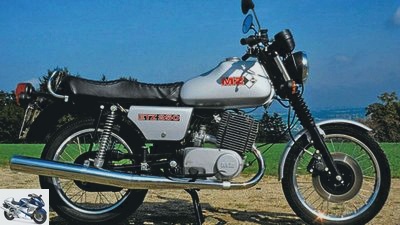
archive
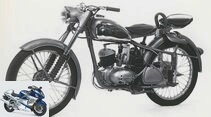
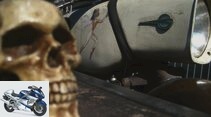
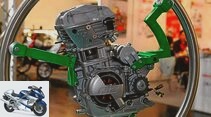
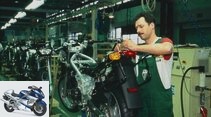
19th pictures
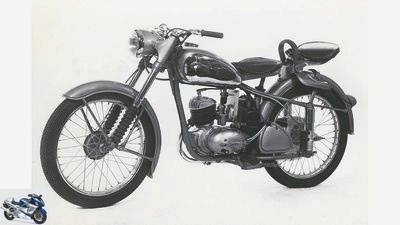
archive
1/19
The neverending MZ story: DKW RT 125.
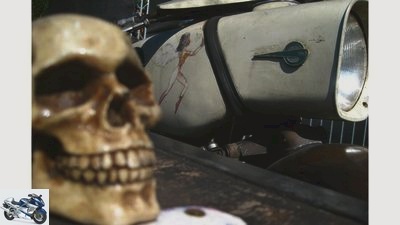
archive
2/19
MZ died on installments. Now the inheritance is still being haggled in court.
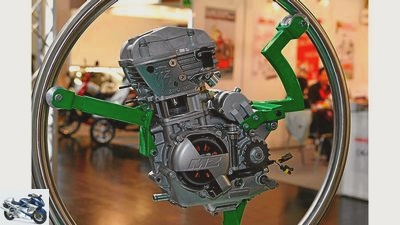
archive
3/19
Didn’t convince the professional world: MZ 4-stroke with variable valve control.
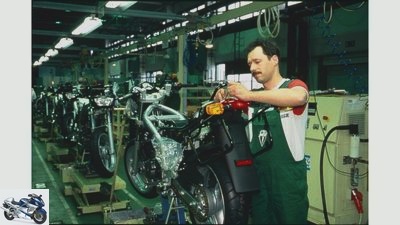
archive
4/19
The brand saved itself through the 90s with Yamaha single-cylinder engines. In the picture the assembly of a MuZ Scorpion Traveler.
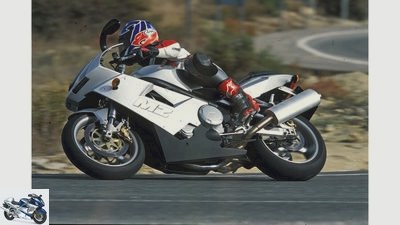
archive
5/19
MZ 1000 S.
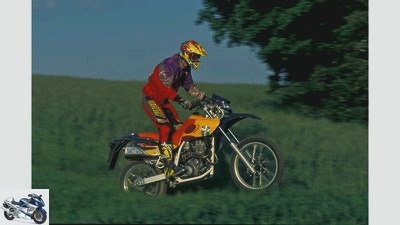
archive
6/19
MuZ Baghira.
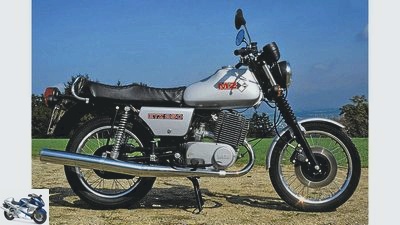
archive
7/19
MZ ETZ 250.
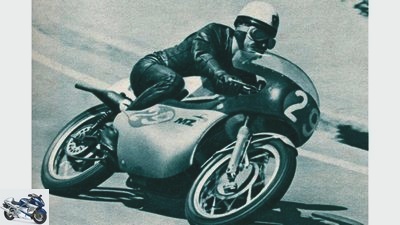
archive
8/19
Sport-MZ RE.
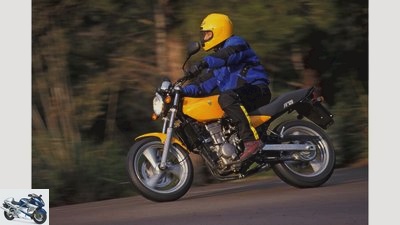
archive
9/19
MZ RT 125.
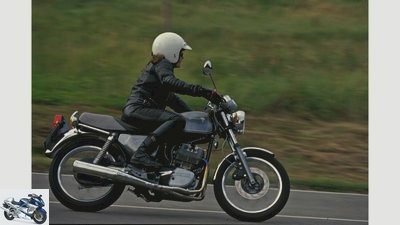
archive
10/19
MZ Silverstar Classic 500.
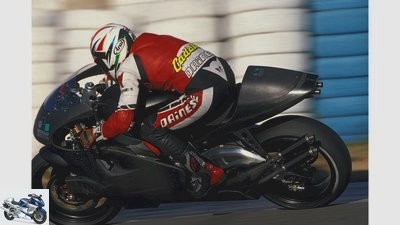
archive
11/19
MZ in racing: The Weber-Swissauto was used by MZ boss Korous in 1998/99. Luca Cadalora drove for a fee of $ 5,000 per race.
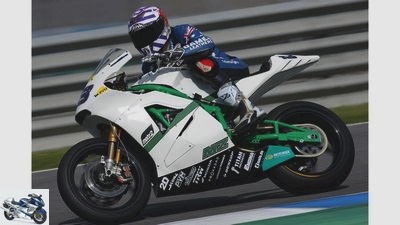
archive
12/19
MZ in racing: Anthony West on the Moto2-MZ: After two years, some trouble and meager points, he parted ways with MZ boss Wimmer.
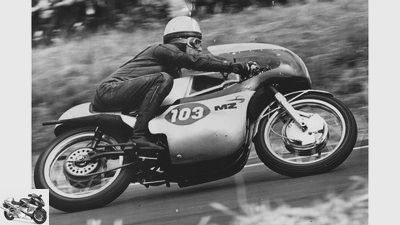
archive
13/19
MZ in racing: After a brief stint in 1960, Heinz Rosner drove the World Championship for MZ from 1964 to the end of 1968 – most recently in three classes. He was fourth in the World Cup five times, and third in the 250 cc class in 1968. In this class he was also a two-time GDR champion.
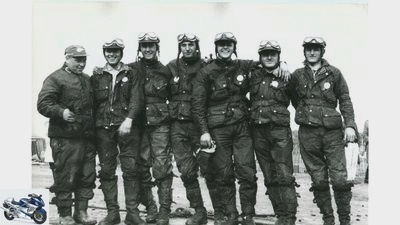
archive
14/19
MZ in racing: The Six Days on the Isle of Man became legendary because of their difficulty. The GDR trophy team (pictured) won there, as did the silver vase team.
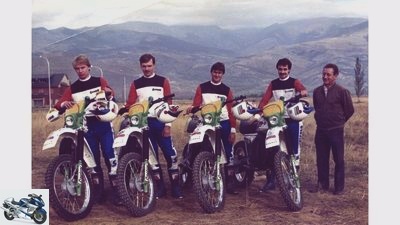
archive
15/19
MZ in racing: black-red-gold and green-white: In 1985 Andreas Cyffka, Udo Grellmann, Mike Heydenreich and Jens Gruner became European junior champions in enduro racing on MZ.

archive
16/19
Will the ignition really be on zero in 2013? Nothing is produced anymore, but there is even more arguing for it.
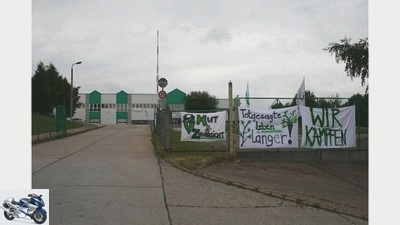
archive
17/19
No investor, no jobs, no motorcycles: the MZ workers fought for a long time with the courage of desperation.

archive
18/19
Ralf Waldmann, Bettina Hager, Martin Wimmer – the trio started with big plans in 2009. Only Wimmer is still fighting, the outcome uncertain.
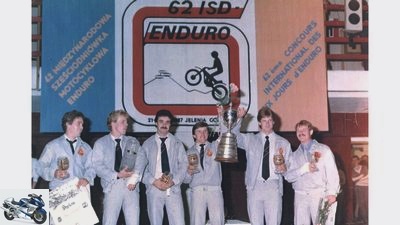
archive
19/19
MZ in racing: The winning trophy team from 1987: Reinhard Kladtke, Uwe Weber, Jens Gruner, Harald Sturm, Jens Scheffler and Jens Thalmann (from left). The Junior Trophy also went to an MZ team.
counselor
traffic & business
MZ story
The neverending MZ story
The dead live longer…
It is well known that those who have been declared dead live the longest. Also MZ. Long time. And maybe even longer. Nothing is produced in Zschopau / Hohndorf anymore. But the wrangling over rights and above all over money is now entering a new round: namely in court.
Ralf Schneider
04/07/2013
The theme runs like a red thread through the last 20 MOTORRAD annual volumes, sometimes formulated less sharply: “MZ in economic difficulties”, sometimes more sharply: “MZ before the end”. There is always analysis, and the search for reasons for and responsible for the economic misery of what was once the largest German motorcycle manufacturer. It is always emphasized how much the workforce – at the peak before the fall of the Wall, that was 3800 people, then 300, then 30 – with their job, the plant, the brand MZ identify. What sacrifices the Saxon MZ workers were prepared to make in order to keep the company, which has been stumbling for over two decades, alive: above-average commitment with below-average wages and sometimes even voluntarily waiving ten percent of it. But the same sentence comes up again and again: “MZ has never made any money since the fall of the Wall.” On the contrary, it has burned many millions over the years. And that would say everything about the reasons for the threatened end of the brand (at least as a motorcycle manufacturer) for the third time.
Buy complete article
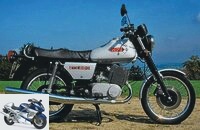
The neverending MZ story
The dead live longer…
6 pages) as PDF
€ 2.00
Buy now
That was already the case when the two West German ex-racing drivers Martin Wimmer and Ralf Waldmann dropped the bomb and announced in March 2009: We are taking over the shop. At the end of 2008 the Malaysian conglomerate Hong Leong pulled the emergency brake after twelve years and a few more sunk millions, ceased business operations and said goodbye after an unsuccessful search for a new investor. For (then estimated) four to five million euros, Wimmer / Waldmann are said to have been awarded the contract. What emerged from it became more and more a mixture of farce and business crime: According to his own statement, Wimmer immediately transferred the all-important trademark rights to MZ to a company in Hong Kong, in which he himself holds shares, and founded “Motorenwerke Zschopau GmbH”, in which the old company should be absorbed. Financed largely from funds from Wimmer’s wife at the time, the Dusseldorf doctor Dr. Martina Hager.
The role intended for Ralf Waldmann: The former Grand Prix driver from Ennepetal was to become the head of what would later become the MZ racing department. But soon there was trouble between the two, and the ambitious project of their own Moto2 MZ turned out to be media-effective, but also less and less competitive, the more the Supersport World Championship Honda bought by the Stiggy team differs from theirs The origin was distant and the more Wimmer used his own technology. Instead of sporting successes, MZ made headlines again such as “Free State of Saxony should vouch for MZ” or “Struggle for bank credit”.
The production of the Charly electric scooter and the Emmely hybrid scooter alone was not enough. And there was no money for the announced construction of a commercially more promising 125 cc.
In short: the situation became confusing. In 2011 it was finally clear that the company was struggling to survive again. Only a default guarantee from the Free State of Saxony, which was promised in August after tough negotiations, seemed to ensure its continued existence. In the meantime, the Moto2 project had died. Instead, Wimmer announced that he wanted to enter the production of combined heat and power units with MZ, and around 60 employees at the plant in Hohndorf had started to produce electric bicycles on behalf of the PG Bikes company. The company or its managing director Manuel Ostner is said to have contributed to the later MZ bankruptcy through “fraudulent practices”, according to Wimmer.
Ostner did not pay open invoices in a significant amount. The Chemnitz “Freie Presse” had previously reported that MZ was unable to deliver bicycles to PG due to the insolvency of a supplier. The Regensburg company PG Bikes offers a.o. chopped luxury bicycles and e-mopeds at prices of up to 60,000 euros, alleged customers so far: Lady Gaga and Hollywood star Orlando Bloom. In Regensburg, the 31-year-old young entrepreneur Ostner has so far mainly attracted attention through appearances in a luxury sports car with thick golden company initials. And, in April 2013, with its second bankruptcy.
Shortly after the failure of Ostner’s payment and another one from a Wiesbaden bicycle company, with which Wimmer subsequently reached a settlement in court, Wimmer’s previous credit institution, the Munchner Merkur Bank, withdrew a bridging loan of 300,000 euros that Wimmer had already promised – although the sum had allegedly already been deposited by a third party as security. In doing so, the bank forced the MZ managing director to file for bankruptcy. An effect that the bank, according to Wimmer in an interview, “possibly even brought about deliberately”. Namely with the ulterior motive of getting the money from the Free State of Saxony that was promised in the form of a deficiency guarantee.
According to Wimmer, the insolvency administrator Dr. Christoph Junker, who declared the restructuring of MZ to have failed in March 2013, although according to statements by those involved at a creditors’ meeting in January, several creditors had spoken out in favor of giving Wimmer and his ambitious concepts another chance. “Enthusiasm for the MZ cause and heart and soul were the driving force behind such statements,” said one present on MOTORRAD. “Only Merkur Bank played the bad boy.” However, according to Martin Wimmer, the insolvency administrator Junker has concluded a commission agreement with Merkur Bank for the sale of the remains of the motor works in Zschopau. Could that mean: the more the bank gets out, the greater the share for the insolvency administrator? That sounds really like business crime. Or is it the delusion of Martin Wimmer?
The Munich regional court should decide on this shortly. There, MZ investor Peter Ertel and Martin Wimmer, who joined in 2011, filed a lawsuit against the bank. It’s about compensation and many millions of euros. The bank in turn sues back with the help of its lawyers. The situation is complicated and “everything is in flux at the moment,” a spokeswoman for the Munich regional court told MOTORRAD. At the moment it is the lawyers’ turn, the “preliminary written proceedings are underway”. A negotiation date is unlikely to be set before autumn. And no matter what the outcome, new motorcycles from Zschopau will probably never be expected again.
One does not do MZ justice if one does not appreciate the racing successes of the Zschopau people. Whether off-road or on the road: There were times when they were world class.
The racing two-stroke spoke Saxon, even before the Second World War, when the charge pump DKW from Zschopau carried Ewald Kluge to his victory in the lightweight TT in 1938, and after a difficult new start, when the lightning-fast MZ won the Road World Championship in the 1960s mixed up. In 1961, the year he fled west, Ernst Degner was runner-up in the 125cc class, and in 1963 Mike Hailwood and Alan Shepherd achieved a double victory in the 250cc class at the Sachsenring. The following spring, Shepherd won the 250cc race at Daytona – without any technical assistance because no mechanic had received a visa for the USA.
However, the capricious MZ racers always drove on a sharp line between victory and failure, often crashing due to sudden piston jamming. “20 degrees and overcast skies, that was MZ weather. On hot days you already knew in advance that no MZ would cross the finish line, ”remembers the journalist and sports historian Wolfgang Wirth. Often the fast two-stroke rotary valve also failed because of the quality of the materials supplied, which could not be obtained from the West due to the lack of foreign currency and ideological scruples.
So there were not only technical but also political reasons that there was never a road world champion on MZ. Ernst Degner’s escape and his two-stroke development aid for Suzuki are just one example of the explosive nature of the World Cup.
Heinz Rosner, who carelessly raved about the beauty of the Finnish landscape after a race in Finland in 1960, was only allowed to drive for MZ four years later. Frank Wendler, who was supposed to compete in the 1974 World Cup, had his motorcycles withdrawn at the last minute – without justification and due to a dubious denunciation. Conversely, the visa affair shows that harassment was not at a loss in the west-east direction either. When the GDR leadership’s aversion to motorcycling increased, MZ fell behind due to a lack of support. 1974 the Zschopau withdrew from the road world championship. The return in 1998 on a repainted Weber Swissauto brought some expensive successes, but the Moto2 engagement from 2010 onwards was unsuccessful.
MZ’s involvement in off-road sports was much more successful, but less noticed. As early as 1965, the GDR team on MZ had won the trophy and the silver vase at the Six Days on the Isle of Man. With varying intensity, but always successful, MZ remained present in cross-country sports for decades. Shortly before the fall of the Wall, in 1987, the GDR team on MZ won the Six Days Trophy in Jelinia Góra, Poland, but the sports department was closed in 1990. In this area, too, the end of MZ threatens to lose a racing culture that cannot be globalized again. Hopefully the enduro ride “around Zschopau” will continue.
history
<!– ESI FOR ads.BannerGallery / irelements / esielement / eyJwYWdlIjoiL3N0YXJ0c2VpdGUvIiwibGF5b3V0IjoiYXJ0aWNsZSIsImVsZW1lbnQiOiJhZHMuQmFubmVyR2FsbGVyeSIsImlyQ29uZmlnIjoiMTQ3MjA2NDgiLCJwYXJhbXMiOnt9LCJpc01vYmlsZSI6ZmFsc2V9 –> <!– CACHEABLE –>&# 34;,&# 34; rectangle&# 34 ;: “<!–# include virtual = \&# 34 / irelements / esielement / eyJwYWdlIjoiL3N0YXJ0c2VpdGUvIiwibGF5b3V0IjoiYXJ0aWNsZSIsImVsZW1lbnQiOiJhZHMuUmVjdGFuZ2xlR2FsbGVyeSIsImlyQ29uZmlnIjoiMTQ3MjA2NDgiLCJwYXJhbXMiOnt9LCJpc01vYmlsZSI6ZmFsc2V9 \&# 34; –> <!– ESI FOR ads.RectangleGallery / irelements / esielement / eyJwYWdlIjoiL3N0YXJ0c2VpdGUvIiwibGF5b3V0IjoiYXJ0aWNsZSIsImVsZW1lbnQiOiJhZHMuUmVjdGFuZ2xlR2FsbGVyeSIsImlyQ29uZmlnIjoiMTQ3MjA2NDgiLCJwYXJhbXMiOnt9LCJpc01vYmlsZSI6ZmFsc2V9 –> <!– CACHEABLE –>&# 34;,&# 34; sky&# 34 ;: “<!–# include virtual = \&# 34 / irelements / esielement / eyJwYWdlIjoiL3N0YXJ0c2VpdGUvIiwibGF5b3V0IjoiYXJ0aWNsZSIsImVsZW1lbnQiOiJhZHMuU2t5R2FsbGVyeSIsImlyQ29uZmlnIjoiMTQ3MjA2NDgiLCJwYXJhbXMiOnt9LCJpc01vYmlsZSI6ZmFsc2V9 \&# 34; –> <!– ESI FOR ads.SkyGallery / irelements / esielement / eyJwYWdlIjoiL3N0YXJ0c2VpdGUvIiwibGF5b3V0IjoiYXJ0aWNsZSIsImVsZW1lbnQiOiJhZHMuU2t5R2FsbGVyeSIsImlyQ29uZmlnIjoiMTQ3MjA2NDgiLCJwYXJhbXMiOnt9LCJpc01vYmlsZSI6ZmFsc2V9 –> <!– CACHEABLE –>&# 34;}}” ga-track-vis =”article.gallery.inline.vis” class =”v-A_-article__inline-container”>
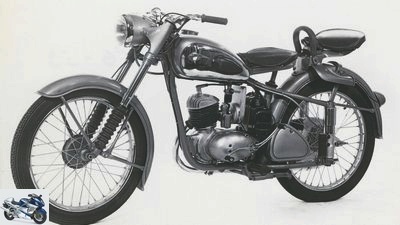
archive




19th pictures
Images: The neverending MZ story
go to Article
To home page
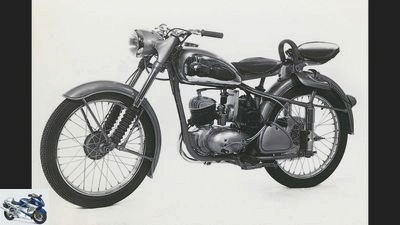
archive
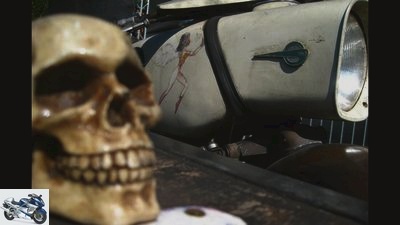
archive
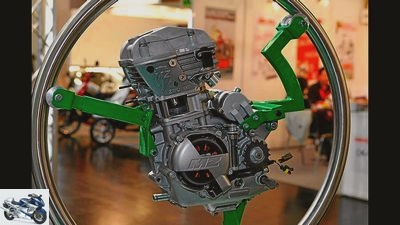
archive
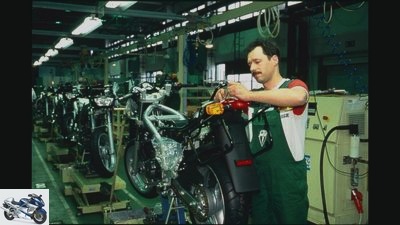
archive
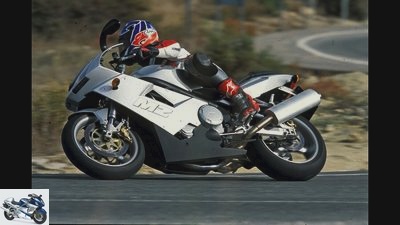
archive
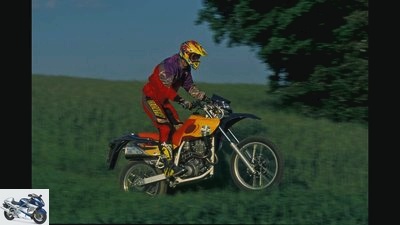
archive
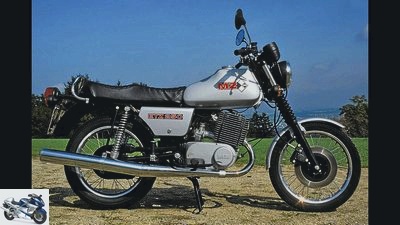
archive
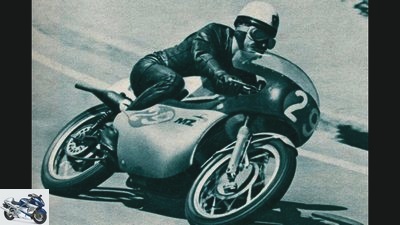
archive
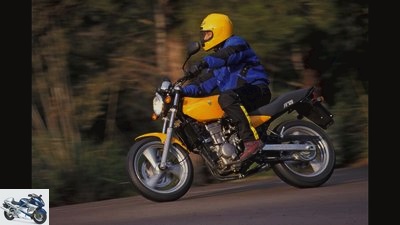
archive
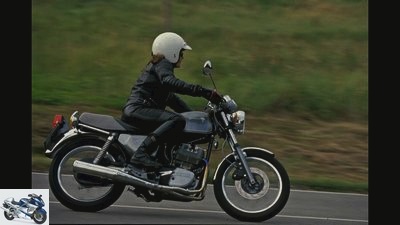
archive
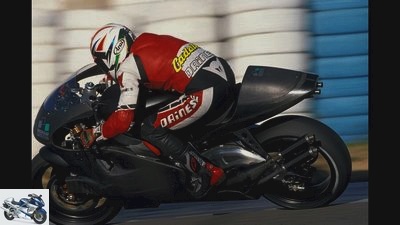
archive
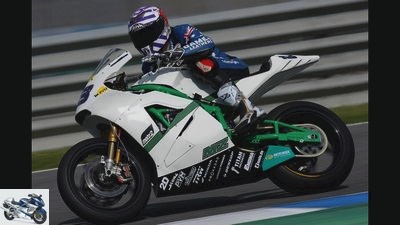
archive
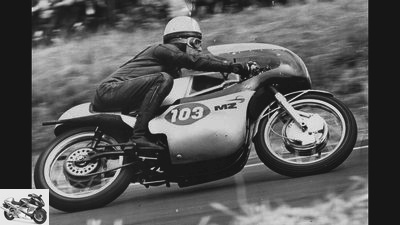
archive
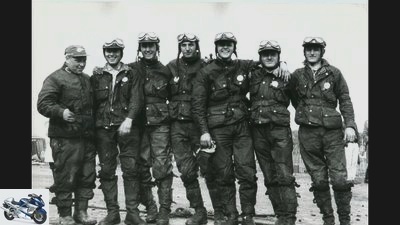
archive
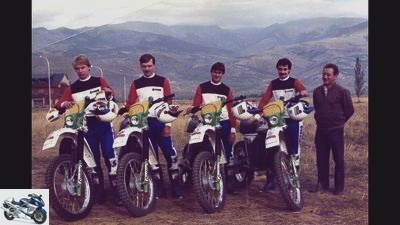
archive
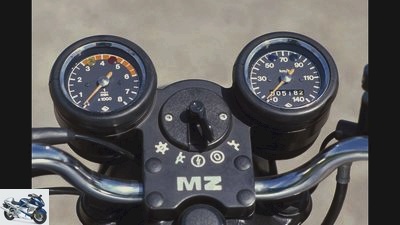
archive
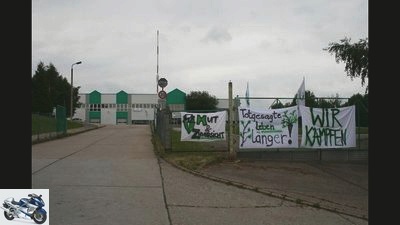
archive
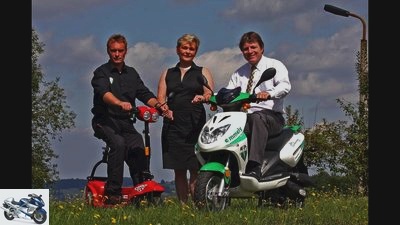
archive
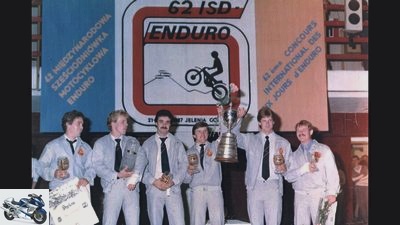
archive
1/19
- 1906 Jorgen Skafte Rasmussen, a Dane, buys an empty cloth factory in the Zschopau valley. In the early years, the engineer had his first car accessories and household appliances produced there.
- 1917 Rasmussen relies on steam vehicles. In vain, but the abbreviation DKW later became a brand name.
- 1922 Rasmussen came across motorcycles via detours – such as the production of toy engines. The first motorcycle to leave the factory is a 2.5 hp 148 cubic two-stroke engine.
- 1926 The actual motorcycle production begins on the assembly line in Zschopau, a real novelty at the time. The first two-cylinder is built.
- 1928 DKW takes over Audi-Werke AG Zwickau.
- 1929 With 60,000 machines per year and almost 2,500 employees, the group is growing to become the world’s largest motorcycle manufacturer.
- 1930 The global economic crisis also brings losses and layoffs in the Central Ore Mountains: only 850 employees.
- 1932 Auto Union emerges from the merger of the Audi, Horch, Wanderer and DKW brands. Trademark: four interlocking rings.
- 1936 DKW maintains a worldwide network of 5000 dealers.
- 1945 The Soviets dismantle all production facilities in all factories.
- 1948 IFA, the automotive industry association, is founded. It also includes the 445 DKW employees when they built the first post-war model, the RT 125, the following year.
- 1952 The company is now called “VEB Motorradwerk Zschopau”, but it wasn’t until four years later that the first machines roll off the production line under the MZ brand.
- 1968 the mail order company Neckermann begins to import MZ to West Germany.
- 1971 In the past decade, MZ has exported almost 260,000 motorcycles to 65 countries. In the Six Days competitions there is hardly any getting past the machines, and in street sports they have established themselves as a fixture with some racing successes.
- 1974 3000 machines are exported to the USA, the following year production reached a record high of 92,000 vehicles.
- 1979 It is decided to close the main plant in the Zschopautal and relocate the company headquarters to Hohndorf.
- 1980s Hein Gericke assures the GDR foreign trade ministry that it will import at least 4,000 machines into the West every year.
- 1983 the 2,000,000th motorcycle rolls off the assembly line.
- 1989 3,200 employees fear for their jobs when the market in the east collapses.
- 1990 In the year after the reunification, MZ sold 70,000 machines, in 1991 it was only 15,000. 1950 employees.
- 1991 the company, which had only been privatized a year earlier, goes bankrupt for the first time.
- 1992 MuZ GmbH is founded because the MZ naming rights had been sold. Managing Directors Wolfram Sauerbrey, Petr-Karel Korous. Presentation of some models with Rotax single cylinder.
- 1994 The manufacturer moves into the new plant, the Scorpion with 660 single-cylinder from Yamaha comes onto the market, the Kobra study with TDM engine, the ancestor of the 1000 model, is presented.
- 1995 the Treuhand sells the production facilities for the manufacture of the two-stroke engines to Turkey.
- 1996 the Malaysian conglomerate Hong Leong Industries Berhad, a financial investor, acquires 100 percent in MZ.
- 1998 MZ tries its hand at the 500 World Cup and achieves some respectable successes. The machine, however, does not originally come from MZ, but from Swissauto.
- 1999 MZ can finally be called MZ again and no longer, as since 1992, MuZ.
- 2000 MZ shows the RT 125, the first self-developed post-turn machine. Your four-stroke engine makes full use of the possible 15 hp.
- 2001 Expansion of the 125 series to include the Supermoto SM and the Enduro SX.
- 2003 the first 1000s are sold, the prototype of which was shown years before.
- 2004 Korous disappears from MZ. Presentation of the 1000 SF.
- 2005 In January, Christoph Baumgartner comes as managing director. His creative ideas did not meet with approval from the Hong Leong managers, and Baumgartner left MZ in the same year.
- 2006 the MZ-Engineering development department is closed, Hong Leong cannot come to an agreement with several co-investors, MZ remains without participation.
- 2007 11.6 percent plus means 221 motorcycles sold instead of 198 as in 2006. For the 125s, business is reduced by almost a third: instead of 1182, only 883 RTs, SMs and SXs are sold. According to the “Handelsblatt”, sales amount to 4.8 million euros.
- 2008 A circular reached dealers in June: the plant would be closed at the end of the year. 70 million euros in losses are given as the reason. In mid-November, the last 1000 series produced on request will be produced. On December 31 of the year, a binding period for the state of Saxony for investment grants expires. Since then, only a few employees have looked after the spare parts business on the basis of fixed-term contracts.
- 2009 Waldmann and Wimmer surprisingly take over the brand, want to bring scooters and e-bikes and continue to build the great 125cc.
- 2010 The banks turn off the tap, but the new owners, Wimmer above all, are negotiating tough. A state guarantee is now supposed to save the brand.
- 2011 Wimmer tries further: block-type thermal power stations and a technically unusual four-stroke engine (photo left) should bring about the turning point. But the plans remain plans. Waldmann gets out. The Ludwigshafen investor Peter Ertel joins as a partner.
- 2012 Short-time work again. Bankruptcy again. The public prosecutor’s office is investigating Wimmer and he goes underground. The spare parts business is withdrawn from him. In 2013 he wants to defend himself in court. open end.
Related articles
-
On the way: Adventure story Thailand
Henniges to travel On the way: Adventure story Thailand Traveling Adventure in Thailand: traveling with a tuk tuk It is 783 kilometers from Chiang Mai to…
-
GTu counselor traffic & business The story of a crooked number The confusion indicator Story of a crooked number What happens if the number of a…
-
Extra: picture story of the fastest bikes in the world
fact Sports & scene Motorsport Extra: picture story of the fastest bikes in the world The fastest bikes in the world Can not go faster Content of…
-
Story: MOTORRAD tire test almost canceled in 2019
Markus Jahn 15th pictures Markus Jahn 1/15 The tire test almost fell into the water in spring 2019 due to one or more precisely several falls. Markus…
-
Photo story: meeting of contrasts – customizing one way and another
fact 24 pictures fact 1/24 And I: “There we are. Rolls really well, this Dixi toilet on wheels. Maybe a little weak on the chest, but very supple.”…
-
archive 19th pictures archive 1/19 The neverending MZ story: DKW RT 125. archive 2/19 MZ died on installments. Now the inheritance is still being haggled…
-
Yamaha finishes the R6 Dunlop Cup
Buenos dias Sports & scene Motorsport Yamaha finishes the R6 Dunlop Cup Yamaha finishes the R6 Dunlop Cup End after 40 years Yamaha Motor Germany has…
-
Gargolov Sports & scene Life: Annual Review 2013 Annual review That was 2013 BMW celebrated its 90th anniversary, MOTORRAD turned 110! But there was also…
-
40 years of the Yamaha Cup in Germany
Yamaha Sports & scene Motorsport 40 years of the Yamaha Cup in Germany 40 years of the Yamaha Cup in Germany The frenzied classroom Congratulations, it…
-
Fathers and sons in motorcycle racing
2snap 13th pictures 2snap 1/13 Peter Ottl already supported his son Philipp in the Red Bull Rookies Cup. 2snap 2/13 In 2016, Philipp Ottl experienced his…